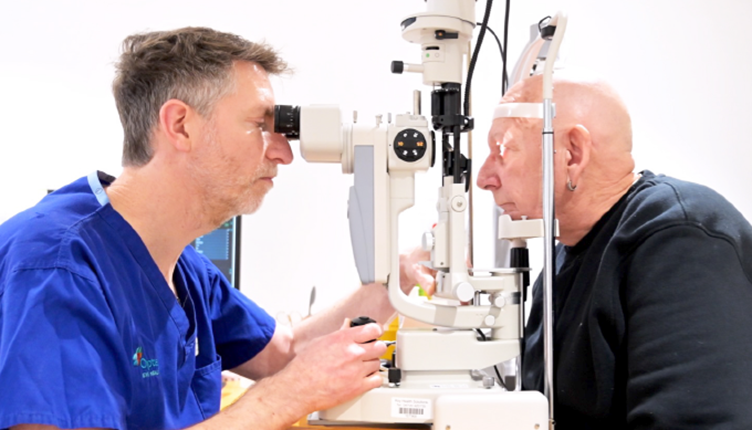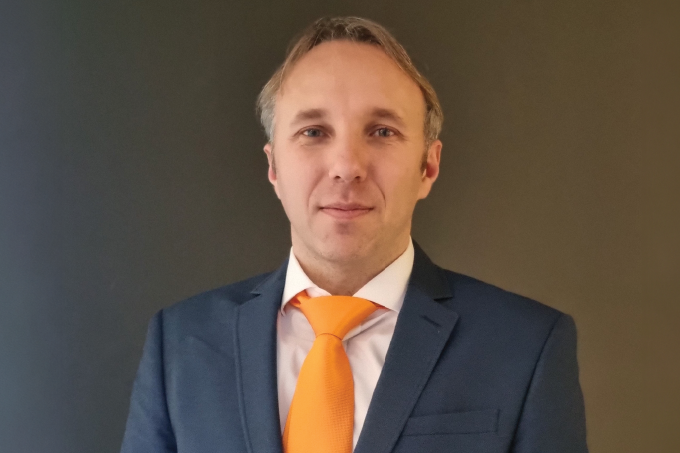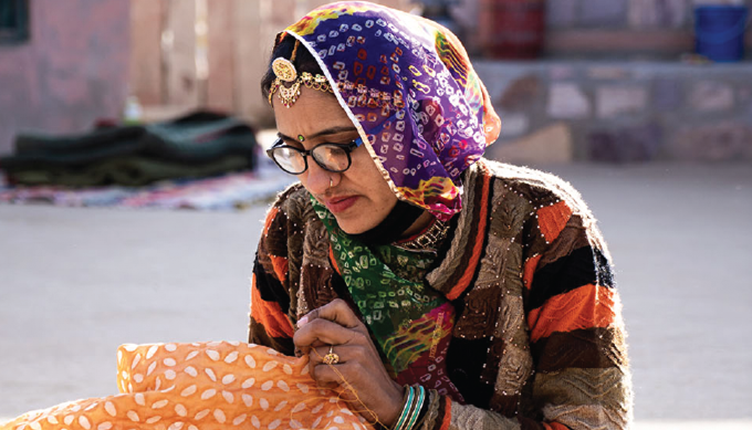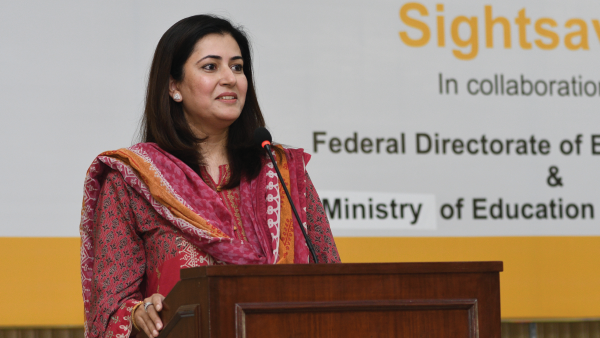You are viewing 1 of your 3 articles before login/registration is required
Shutting Down Short-Sightedness
Experts from across Europe weigh in on the continent’s response to increasing rates of myopia
A 2016 systematic review and meta-analysis of the prevalence of myopia projected that half of the world’s population will be myopic by 2050 – a staggering five billion people. It also predicted that one billion would face myopia-related ocular complications and vision loss as a result of high myopia (1). With global organizations, including the International Myopia Institute, reporting that myopia cases worldwide are still rising in accordance with the predictions made eight years ago, the need to take action has never been clearer (2).
Although Europe currently has a lower prevalence of myopia than some of its neighbors (including East Asia and North America at 40 percent), it is no exception to the trend – and the increasing rates are most noticeable in school-aged children (3).
But what is it like to actually observe this increase within the patients you see in your practice? Here, we speak with several eyecare professionals from across Europe to explore current attitudes towards myopia, the limitations of available myopia control measures, and their hopes for the future.
Note: This is an abridged version – you can find the full roundtable discussion in
Is myopia a problem in your country?
Wolf Alexander Lagrèze – Germany: There is quite a lot of public, scientific, and clinical concern, but I would not term it a “problem.” Many ophthalmologists as well as opticians have begun to offer active myopia management over the last few years… We have good quality, national data (from the KIGGS study) that shows that there was not a significant increase in myopia rates over the 11 years from the first baseline study. However, the potential influence of smartphones and other devices are not yet reflected in the data (4).
Andrzej Grzybowski – Poland: Children in Poland share similar environmental risk factors with other European countries. We have a myopia prevalence between 35–45 percent in teenage and young adult groups, with a tendency to increase. There are a growing number of young myopes who are developing the condition starting between five and six years of age.
Dominique Bremond-Gignac – France: Myopia is definitely a concern in our country as its prevalence has increased to the point that it is now present in between 35–40 percent of our young adult population. The study of Leveziel in a large French population demonstrated the increased frequency of myopia and the need to control it (5,6,7).
Paolo Nucci – Italy: Yes, the “myopidemia” is starting to be considered a problem in our country and we, as pediatric ophthalmologists, can be “blamed” for this. Our frequent presence in both the media and in pediatric congresses all over Italy has contributed to families being more alert about the possible increase in the prevalence of myopic children. As a matter of fact, we face a clear increase of myopia defects in patients under the age of eight in the last five years. In our setting, a university outpatient clinic, in 2014, two out of every 100 myopic patients were under eight years old. In 2022, that figure had risen to nine out of 10 (8,9)!
Carla Lança – Portugal: Myopia is a condition of public health concern in Portugal. A recent systematic review and meta-analysis concluded that the prevalence of refractive error in Portugal is 32 percent (10). Myopia affects between 2–4.5 million Portuguese individuals. Although data on myopia prevalence and myopia progression in Portugal are scarce and heterogeneous, there are some reports that show myopia prevalence to have almost doubled in school children over the last few years.
Kathryn Saunders – UK: Myopia is increasing in prevalence in the UK, but not to the same extent as is being seen in East Asian countries. This may be reflective not only of ethnic differences in the susceptibility to myopia, but of the different lifestyle and less intensive early education patterns in the UK compared with many East Asian countries. The Northern Ireland Childhood Errors of Refraction (NICER) study determined prevalence of myopia using robust measures in a population-based study in 2006–2008 as 1.9 percent in six to seven-year-old White children living in the UK, and 16.4 percent in those aged between 12 and 13 years (11).
Olavi Pärssinen – Finland: Myopia is not regarded as a significant problem in Finland. Looking at the historical data, we can see that the prevalence of myopia has increased from World War II. In rural populations, the prevalence of myopia in adults between 41 and 50 years of age, born between 1920–30 was six percent. After the school reform in the 1970s, the length of compulsory education has been between nine and 10 years. Thereafter, the prevalence in the new generation increased to around 25 percent, but has not significantly increased from that since.
What control and management strategies are being used in your country?
Wolf Alexander Lagrèze: There are guidelines on daylight exposure and reading distance. In terms of treatment options, we use atropine 0.01 percent for at least two years for those progressing more than 0.5 D per year. Multi-segment spectacles and contacts are also in use for more refractive solutions. Fast progressors are also offered combined therapy using both atropine and optics. However, there are some problems with atropine that eye care professionals in Germany have to negotiate – the first of which is that its use is off label and only certain pharmacies produce or have it in stock.
Andrzej Grzybowski: The first and most common therapy adopted for myopia control was atropine 0.01 percent; however, there has recently been a switch to the use of 0.05 percent atropine. Low-dose atropine is used as an off-label therapy prescribed only by physicians. It is reimbursed, meaning that the cost for the patients is relatively low. Contact lenses, including orthokeratology (ortho-k), are relatively uncommon in Poland, although they can be delivered both by ophthalmologists and optometrists. Recently introduced spectacles are becoming increasingly popular… One of the problems with optical therapies is that optometrists in Poland are not allowed to use cycloplegic drops, and so cannot measure objective refraction after cycloplegia. In those cases, children are managed either by pediatric ophthalmologists or by joint ophthalmology-optometry clinics.
Dominique Bremond-Gignac: The primary myopia control method in France is defocus glasses because the cost is generally acceptable, being approximately €100 higher than regular glasses, and is clearly easy to adapt. The second method of controlling myopia comes through the use of low dose atropine because it is fully reimbursed. Defocus contact lenses and ortho-k are less common – both because of the cost and the difficulty of adaptation.
We need to improve screening for the early detection of myopia in children, for those between the ages of three and four … and then again at six-years-old. The environmental risk factors of myopia are not well known or followed by parents, so this must also change. Finally, the fact that myopia control solutions have a cost (except low-dose atropine) may also affect parent perceptions. In young adults, refractive surgery is proposed without comprehension of myopia-related disease.
Paolo Nucci: In Italy, outdoor activity is mainly promoted by pediatric ophthalmologists, pediatricians, and, in some parts of the country, by school teachers. My personal approach is prescribing atropine 0.01 in the treatment of myopia, as soon as it starts… Later on, we use a combined optical and pharmacological treatment, while after puberty we switch to defocus lenses until they are age 16–18. At this time, youngsters generally prefer contact lenses, so we try to allow for the possibility of defocus contact lenses.
The main problems are related to the fact that atropine is a galenic preparation – and sometimes the preparation is not adequate (12). We can’t forget that the cost is also highly relevant, being more than €30 per bottle, and any prescription cannot be used more than once. Additionally, compliance must be checked often. Defocus lenses are expensive and the frequent adjustments hinder adherence.
Carla Lança: Various treatments are used in Portugal, including low-dose atropine, novel myopia control contact lenses and glasses, and ortho-k… Some eye care professionals also recommend that children increase their outdoor activities and advocate for changes in lifestyle… Although there are several options available for myopia control, there are still some challenges. Parents with children on low-dose atropine, prescribed off-label, need to go to the pharmacy very often. Additionally, novel myopia control treatments may be difficult to implement in low socio-economic settings due to their high costs.
Kathryn Saunders: The optical methods of myopia control available in the UK to optometrists and ophthalmologists include ortho-k, multifocal soft contact lenses, and peripheral defocus spectacle lenses. These are the “treatments” that are licensed for myopia control. Primary care optometrists have good access to all these options and are taking them up and offering them to patients. The major challenge is the cost – they are not covered by the National Health Service’s (NHS) voucher, which covers the cost of basic spectacle lens and frame for children under 16 years of age.
Atropine is not licensed for myopia control in the UK – at least, not yet! However, I am aware that it is being used off-label via compounding pharmacies by ophthalmology colleagues. The challenge with that option is the difficulty in knowing what dose is being applied.There is also the relatively new option of low level red light therapy.
Olavi Pärssinen: Children’s vision screening in Finland is conducted by nurses regularly throughout a child’s life. Generally, screenings will occur around the ages of five, seven, 11, 15 and 17 years old. In addition, if the child has any problems with their vision or if vision in either eye is less than 0.8 on the Snellen scale, they are sent to an ophthalmologist or optician free of charge.
Atropine drops are not available in Finland, so the primary recommended treatment is the use of full corrected spectacles. Some older school children wear contact lenses. The greatest problem with contact lenses has been corneal infections.
Refractive surgery in young adults is quite common, but the comprehensive data is missing. The opticians market different contact lenses as “correcting peripheral hyperopic defocus,” but again comprehensive data is lacking. Generally, Finnish ophthalmologists have a skeptical attitude to these lenses due to somewhat questionable scientific evidence.
As far as I know, only one optometrist in Finland fits ortho-k lenses…However, the changes in visual function and corneal shape are reversed after discontinuation of ortho-k lens wear. There is not much data about the changes of axial length and choroidal thickness after discontinuation of the ortho-k treatment… If used for years at a time, pathological changes can be seen, including polymegathism and loss of endothelial cells. Physiologically, daily use of contact lenses would be safer. I’m looking forward to seeing randomized controlled clinical trials to show that use of ortho-k lenses would prevent some of the myopia related ophthalmic complications. Without that, it is difficult for me to find a medical justification for this treatment.
What will – or should – the future look like?
Wolf Alexander Lagrèze: Public education is extremely important and so are screening programs – not just for children but also for high myopes beyond 40 years of age. We need greater refinement in terms of atropine concentration depending on iris pigmentation and ethnicity. It would also be good to see a switch from refraction to eye length-based myopia control, along with more and better controlled clinical trials. Finally, I think if we are to see advancements in treatment, there must be a sustained and critical look at what might be termed pseudo-innovative technologies, such as light therapy of certain wavelengths.
Dominique Bremond-Gignac: I think the combination of two systems, such as defocus glasses or contact lenses and low-dose atropine, will be useful. Uncovering new physiopathology mechanisms may open a new era for other myopia control systems.
Paolo Nucci: Perhaps my biggest wish is for myopia to actually be recognized as a problem. If this happens, it should lead to a better understanding of the mechanisms behind the available therapies and, I would hope, avoiding litigious fights around atropine treatment dosage or defocus technologies. We also need a clear and reliable protocol for follow up. Ultimately, we need an increase in the number of pediatric ophthalmologists, and we should offer orthoptists a greater role in refraction.
Carla Lança: Several therapeutics are in development, such as light-based therapies. Nevertheless, it would be relevant to start early interventions before school age and probably before the pre-myopia state to either avoid myopia altogether or delay its onset. This may involve continued research on lifestyle interventions and a better control of environmental risk factors. Additionally, it may also involve collaboration between eye care professionals, public health professionals, and educational institutions.
Kathryn Saunders: [Combinations] of the currently available therapies are likely to be useful and more application of early interventions, ideally before onset and on top of the lifestyle, changes have promise. Over the next 10 years, I’d like to see if there is potential for NHS funding for myopia management in primary care settings so that access is more equitable and care is provided in the community by the largest eye care workforce who are best placed to identify and manage the vast majority of myopia. Obviously, the small subset of children who are not “regular” myopes … may require ophthalmological input in a secondary care setting.
Olavi Pärssinen: It is an urgent task to find the most appropriate concentration and dosage of atropine, as well as clear and reliable guidance on when and to whom it should be recommended.
Andrzej Grzybowski: I believe that artificial intelligence (AI) algorithms can help develop non-invasive diagnostics of myopia; for example, based on fundus pictures, that would not need cycloplegia and enable us to conduct massive screening projects. Cycloplegic refraction is presently a major limitation for both high-volume screening projects and including optometrists in children’s myopia diagnosis in some countries. Moreover, AI can help prepare risk prediction models for both myopia onset and progression. The European Network for Myopia Prevention and Control that I coordinate works on both projects and we welcome experts who are interested in joining us.
I look forward to future therapies that can be more effective than what is currently available. In the meantime, however, I await clinical studies that show how combination of new modes of control can increase therapeutic efficacy.
About the contributors

Dominique Bremond-Gignac is Professor of Ophthalmology and Head of the Ophthalmology Department at University Hospital Necker-Enfants Malades and Paris University in France.
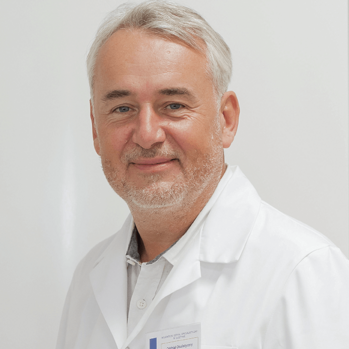
Andrzej Grzybowski is a titular Professor of Ophthalmology, Head of Institute for Research in Ophthalmology, Foundation for Ophthalmology Development, Poznan, Poland. He is President-Elect of European Association for Vision and Eye Research (EVER) and Treasurer of European Academia of Ophthalmology.
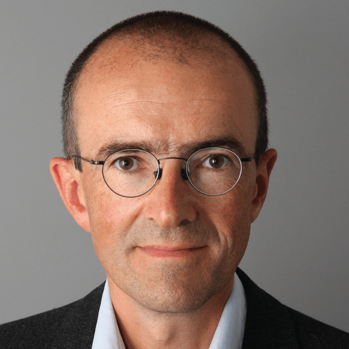
Wolf Alexander Lagrèze is the Head of Section for Neuro Ophthalmology and Pediatric Ophthalmology at the University of Freiburg, Germany.
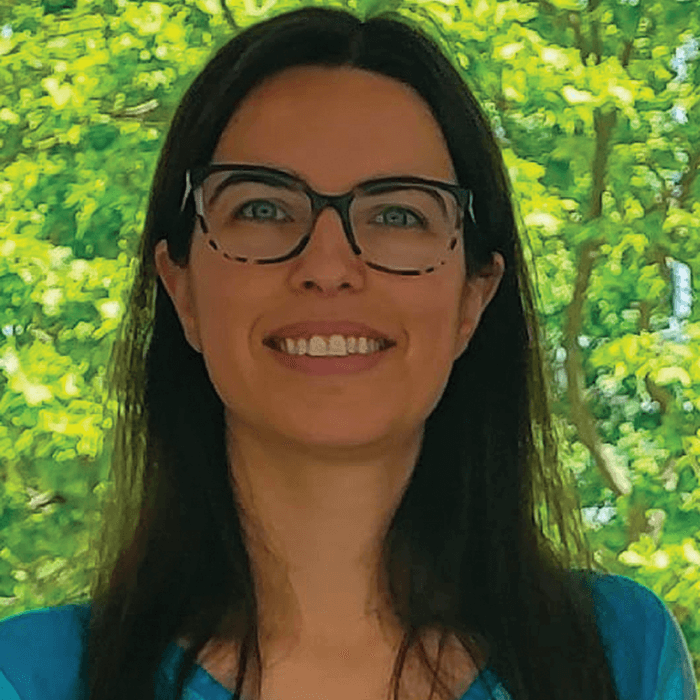
Carla Lança is an Assistant Professor of Orthoptics and Vision Sciences at Lisbon School of Health Technology (ESTeSL) in Portugal.

Paolo Nucci is Professor of Ophthalmology at the University of Milan and Chairman of the University Eye Clinic at the San Giuseppe Hospital in Italy.

Olavi Pärssinen is Adjunct Professor of Ophthalmology at the Department of Gerontology and Health Sciences, University of Jyväskylä, Finland.
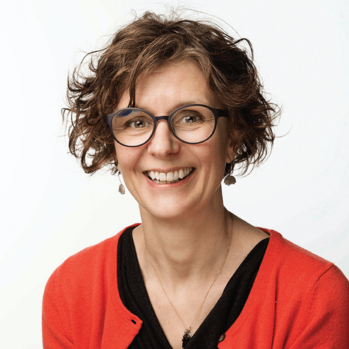
Kathryn Saunders is Professor of Optometry and Visual Science at Ulster University in Northern Ireland.
References
BA Holden et al., “Global prevalence of myopia and high myopia and temporal trends from 2000 through 2050,” Ophthalmology, 123, 1036 (2016). PMID: 26875007.
International Myopia Institute, “Myopia” (2023). Available at: bit.ly/40Z0lpe
A Grzybowski et al., “A review on the epidemiology of myopia in school children worldwide,” BMC Ophthalmol, 20, 17 (2020). PMID: 31937276.
A Schuster et al., “Prevalence and Time Trends in Myopia Among Children and Adolescents,” Dtsch Arztble, 117, 855, (2020). PMID: 33612155.
A Ducloux et al., “Progression of myopia in teenagers and adults: a nationwide longitudinal study of a prevalent cohort,” Br J Ophthalmol, 107, 644 (2023). PMID: 34937695.
D Tricard et al., “Progression of myopia in children and teenagers: a nationwide longitudinal study,” Br J Ophthalmol, 106, 1104 (2022). PMID: 33712479.
E Matamoros et al., “Prevalence of Myopia in France: A Cross-Sectional Analysis,” Medicine (Baltimore). 94, e1976 (2015). PMID: 26559276.
P Nucci et al., “Cochrane corner: interventions for myopia control in children,” Eye (Lond), [Online ahead of print] (2023). PMID: 37142779.
P Nucci, “Childhood myopia - a global perspective,” Graefes Arch Clin Exp Ophthalmol, 261, 41 (2022). PMID: 36227372.
VL Alves Carneiro, JM González-Méijome, “Prevalence of refractive error in Portugal - A systematic review and meta-analysis,” J Optom, [Online ahead of print] (2022). PMID: 36050229.
SJ McCullough et al., “Six Year Refractive Change among White Children and Young Adults: Evidence for Significant Increase in Myopia among White UK Children,” PLoS One, 19,11 (2016). PMID: 26783753.
M Sacchi et al., “Efficacy of atropine 0.01% for the treatment of childhood myopia in European patients,” Acta Ophthalmol, 97, e1136 (2019). PMID: 31197953.
The New Optometrist Newsletter
Permission Statement
By opting-in, you agree to receive email communications from The New Optometrist. You will stay up-to-date with optometry content, news, events and sponsors information.
You can view our privacy policy here
Most Popular
Sign up to The New Optometrist Updates
Permission Statement
By opting-in, you agree to receive email communications from The New Optometrist. You will stay up-to-date with optometry content, news, events and sponsors information.
You can view our privacy policy here
Sign up to The New Optometrist Updates
Permission Statement
By opting-in, you agree to receive email communications from The New Optometrist. You will stay up-to-date with optometry content, news, events and sponsors information.
You can view our privacy policy here

